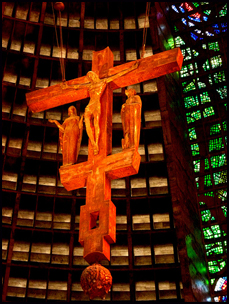
By PAT HARTMAN
News Editor
A lot of people have called Kashmir the most beautiful place in the world, and nowadays it has other names, too. Here’s a sobering tale. Film director/producer Rahul Dholakia arrives in the capital, Srinagar, with a sizeable production team and a lot of equipment, expecting to spend a month and a half on location shooting his newest work, Lamhaa. Three different varieties of government agencies tell him the country is in turmoil, and martial law could snap its jaws at any moment, with the population at the mercy of a strict curfew and a fire-at-will policy. For crowd control, he’s given some government protection, and hires some security, too.
So, he’s got 60 actors and crew at the vegetable market outside the city, and at first, some of the locals are hospitable. The film company goes to work. Word spreads, and about a thousand local men come out to watch. (In these parts, women don’t gawk at public spectacles, especially if foreigners are involved.) The crowd multiplies tenfold, and the director is taken hostage and brought before the local council, which tells the police, who are supposedly protecting the visitors, to get lost. Here’s part of Dholakia’s later account:
We had survived this almost six-hour ordeal, brushing death and mentally screwed. If this was day one, I dread to imagine how the rest of the shoot was going to be. A line in my film best summarizes our first day – “Welcome to Kashmir, the most dangerous place in the world”.
And that’s all we’re gonna say, except that it has something to do with local political squabbles, and also with international problems such as hating India, where Rahul Dholakia was born. He gained extensive production experience in his home country, then moved to the U.S. to earn a Masters degree from the New York Institute of Technology, and now lives in California, India, and wherever he happens to be making a movie. In India’s 2006 National Film Awards, his Parzania won in two categories.
This “most beautiful place” thing is, of course, strictly a matter of taste. But that doesn’t stop anybody from nominating their favorites. There are people who swear Patagonia is the most beautiful, and they make a good case. Bruce Chatwin and Paul Theroux both liked it so much they wrote books about it separately and together. Francis Ford Coppola recent filmed part of Tetro there. It’s a region, not a country, being part of two countries, Argentina and Chile. It’s the home of the Andean condor, the biggest bird there is, and has two very noteworthy mountains, Fitz Roy and Cerro Torre, and a glacier called Upsala.
In the Argentine portion of Patagonia, we learn from Physorg.com, there’s an area called Bajada del Diablo or Devil’s Slope, which at some time in the past was pockmarked by a rain of meteorites that left at least 100 craters. Some of those little hummers are 50 meters deep and 500 meters across. Bajada del Diablo is in fact the second biggest crater field in the world. The biggest is in Siberia, and it kind of makes you wonder why meteor showers would go out of their way to fall on two such bare, unpopulated places.
Ever notice how many of the very most interesting travel writers are the folks who are primarily in a place for some other reason? Example: Paul Theroux started writing about Africa because he was there with the Peace Corps. Kevin Dolgin travels for business, and writes because he has something to say. One kind of travel narrative is what comes out when you’re somewhere for another reason, and writing en passant, as it were. Another kind results from going somewhere just for the purpose of writing about it. Possibly, writers of science fiction (or speculative fiction, which many of its practitioners prefer to say) should be considered travel writers. If the ability to convey a sense of place is the criterion, maybe it shouldn’t matter if the place is imaginary. What do you think?
photo courtesy of madpai, used under this Creative Commons license

 By PAT HARTMAN
By PAT HARTMAN
 Now, when it comes to French, for some reason, the phrase that immediately springs to mind is, Voulez-vous couchez avec moi ce soir? (Would you like to go to bed with me tonight?) Because of the LaBelle song, remember? But I wouldn’t expect to find that one in
Now, when it comes to French, for some reason, the phrase that immediately springs to mind is, Voulez-vous couchez avec moi ce soir? (Would you like to go to bed with me tonight?) Because of the LaBelle song, remember? But I wouldn’t expect to find that one in 
